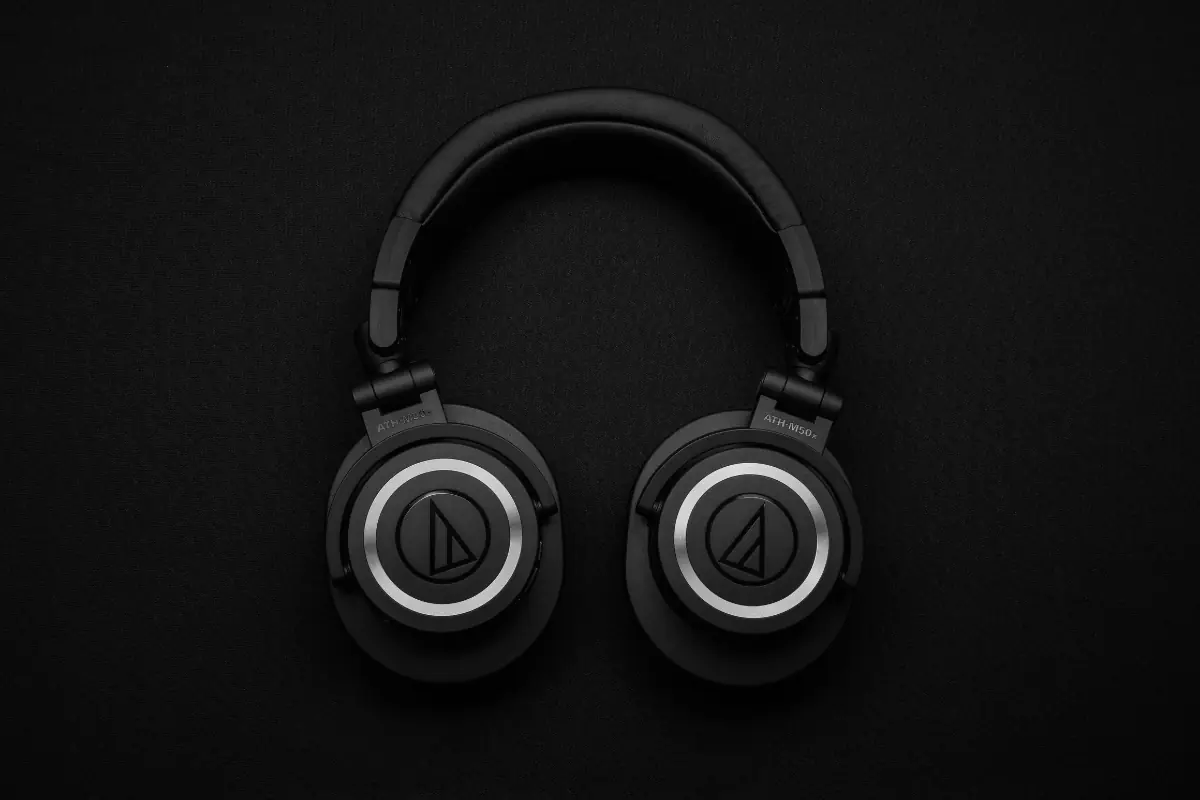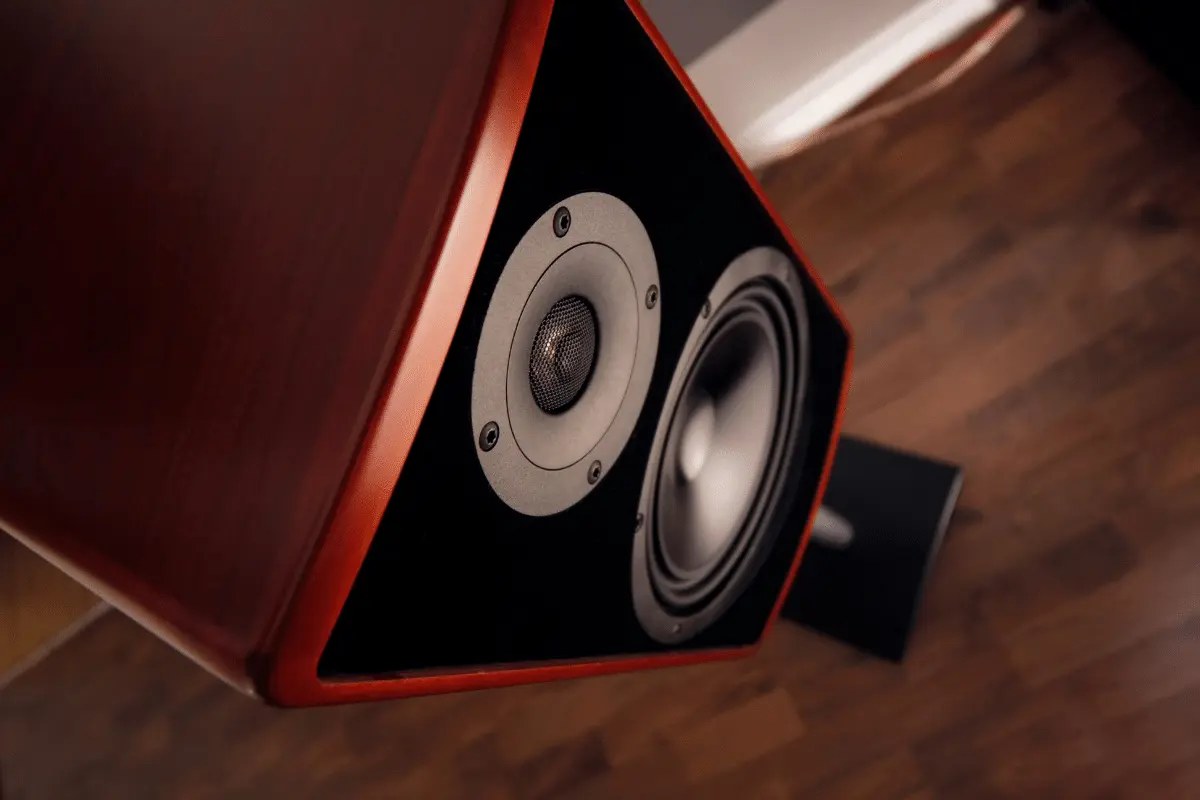For some, headphones are an indispensable part of their everyday carry. Just like their car keys, phone, and wallet. Whether you are a music buff or not, having a nice set of wireless headphones is super convenient. But which one do you buy? To solve that, we created this complete guide to buying wireless headphones.
The perfect wireless headphones depend on your use case. You need to keep in mind the type and also how good the specs are. Things like frequency response, impedance, and sensitivity all matter. Other things like ANC, weight and extra features are important too!
Of course, as you might have guessed there is more to that. Choosing the right set of wireless headphones needs patience and also a knowledge of what are your priorities. Let’s dive in all of these a bit deeper for a better idea of what I am saying.

What to Look Before Buying Headphones?
Alright then, let’s get into the more technical side of things. Whenever you are going to buy any pair of headphones, you will be first presented with the specifications. Whether it be on the company’s website or at a shop.
So, knowing what each specification means and how it will impact the performance is the very first step. Any buyer’s guide wireless headphones are not complete without talking about the specs. Let’s walk you through all that you need to know.
There are a couple of common specs you will come across:
- Frequency Response
- Impedance
- Driver Size
- Sensitivity
Frequency Response
This spec will be mostly listed in the form of a range. It can be 20 Hz to 20,000 kHz.
The lower and higher number represents the lowest and highest frequency the headphones can produce.
So, the 20 Hz in this case is the lowest a headphone will produce. It can also be said that it is the lowest bass frequency.
The higher number is the highest frequency the headphones will produce. The lower the bass frequency and higher the high frequency, the better it is.
A headphone with a very high frequency will be able to give you a much clearer sound. It will sound crisp and more high-quality.
There is a diminishing return though. Do not get swept up in all the big numbers. Humans have a hearing limit and typically people who are above the age of 20 cannot really hear very high frequencies.
However, a high frequency will give you a very nice treble range which will make listening to music very fun.
Impedance
The process of transmission and resistance to electric current is known as impedance. A headphone with a higher impedance will sound better. But you will also need a more powerful amp.
Impedance is measured with Ohms. It can range from 8 to 600 Ohms! You seriously do not need to go for 600 Ohms. For most people, 20 – 40 Ohms should be more than enough.
If you consider yourself an audiophile and want a really good experience, 64 Ohms and up is a good range to shop around.
Headphones that have very high impedance will need powerful devices and amps. That means they might not always work with your iPod or smartphone.
Driver Size/Type
There is a misconception that the larger the driver, the fuller music it will produce. Actually, large drives do not automatically mean louder music. The max driver size as recommended by experts is 42mm.
Very large drivers cannot reproduce high frequencies efficiently. This is because the larger the size, the shape will warp at high frequencies.
This will give you irregular frequency responses. When it comes to drivers, there are different types as well.
Driver Types
Here are some driver types to consider before purchasing your headphone. Each of these is designed for specific purposes and music tastes. So, be very careful when choosing your type.
Planar Magnetic: These give you very detailed sound across the frequency spectrum but lack bass a bit.
Dynamic Drivers: For the most detailed sounding experience, dynamic drivers are great. Bass heads will love the deep notes as well. One issue with these is they physically move too much. This can lead to distortion.
Bone Conduction Drivers: These do not have the best quality but it is great for those who have a hearing impairment. They transmit music through your cheekbones. Sounds futuristic right?
Balanced Armature Drivers: Most find in-ear headphones’ sound is detailed. But they are not able to produce very deep bass notes.
Sensitivity
The easy explanation for sensitivity is a high sensitivity headphone will sound louder at the same volume levels compared to a low sensitivity pair. There is a problem here though.
Most manufacturers are not consistent in how they advertise sensitivity. So, it might get difficult to know which headphones will be louder.
Typically, anything between 0 dB SPL/mW to 105 dB SPL/mW is a good range.
Types of Wireless Headphones in the Market
Now that you know the specific technical details, it is time to move on to the type of wireless headphones. There are quite a few. Choosing the right one will depend on your personal use case and what you prefer.
On-Ear Wireless Headphones
On-ear headphones are physically smaller in size. They are also lighter and tend to fit directly on the ear. What I mean is the ear cups are not that big and do not really go over your ears.
Just by their design, they also do not provide that much noise isolation either. Which means you will hear a bit more ambient noise when wearing them.
These are great in certain places though. If you are someone who likes having the ambient sound seep through a bit, on-ears are the best choice. For example, if you are at an office and need to listen to people.
And since they are not as bulky, these can be more portable too! That is good news for those who like to travel light.
There are some problems with these types of headphones as well. One is you might feel pressure on your ears. So, they tend to be less comfortable during long music listening sessions. Those who like to be active might feel like they come off rather easily.
But you cannot say these are inferior to other types of headphones. Especially if you are shopping in the same price range. A good-quality pair will still be a very viable option.
Over-Ear Wireless Headphones
The next type is over-ear headphones. These are exactly what they sound like. The ear cups are much bigger and will cover your entire ear. That means they will sit over your ears. Some of the best pairs of headphones in the market are over-ears.
They do not clamp down as hard compared to on-ears. Over-ear headphones can be considered the classic style. I prefer over-ear headphones, but this is of course, subjective. The noise cancellation is also great.
But since they are larger, they tend to be bulkier. Some models can be folded up though. This makes them easier to carry around.
One cool benefit of over-ears is that there is a bit of space between your ears and the actual speakers. This can give you a concert-like feeling. Thus, it makes listening to music a very enjoyable and engaging experience.
Many sound engineers and hardcore audiophiles will only go for over-ear headphones for this reason. Since they are larger the sound is crispier
Some downsides are they are large and bulky and the ambient noise will not come through as well. So, you might not want to wear this when you need to be aware of your surroundings.
These are great for getting engulfed in the music though. And you will not regret buying them. They tend to get a little bit hot as well.
Earbuds
Now, you may argue that earbuds are not exactly headphones. But since this is meant to be a complete buyer guide wireless headphones, I decided to put earbuds on here, so you get the complete picture.
Wireless Earbuds can come in two different styles:
- Wireless Earbuds
- True Wireless Earbuds (TWS)
Wireless Earbuds
These buds will often have a single short wire connecting the two earbuds. The wire does not connect to your device (that would just make them wired earbuds). As for sound quality, the sound is on par with different types of earbuds.
But it is not as good as over-ear or on-ear headphones. This is simply because they are smaller and the drivers are, of course, not that big.
A cool thing about these is that they are portable. The string connecting the two earbuds can give you stability and you will not feel like these will fall off. So, losing them is not a problem.
Some sportier models are great for workouts. They can be water-resistant. This should take care of your sweating during an intense workout session.
Since there is a cable at least connecting the two earbuds, it might come in the way though.
In some cases, the cable can rub against your clothes or skin. That can produce noise which can be a bit distracting.
True Wireless Earbuds (TWS)
Right from the name you can tell that these are special. Those who might be looking for over-ear and on-ear headphones might also be swayed by TWS since they are just so convenient. They do not have any sort of wires.
The two earbuds are completely free. The buds use Bluetooth to connect to your device and give you complete freedom. The sound quality is great as well. This is because TWS headphones sit in the ear canal.
What you get is a rich and detailed listening experience. You can wear these for quite a long time as well. Although this is also the case with traditional earbuds depending on the quality.
TWS earbuds are often ergonomically shaped and designed to help wear longer and with more comfort.
They do not become uncomfortable to wear and some stay pretty well-lodged in your ears. If you have no experience with TWS earbuds, at first you might feel like these will fall off at any moment.
But do not worry, that is not the case. But you still need to be careful though. Since no wires are connecting the two earbuds, losing one of them is a possibility. And none of us wants that to happen.
TWS is great for portability and helps maintain a low-profile appearance. I also think they look rather stylish. So, that is a big plus.
Bone Conduction Headphones
These are a unique bunch and super futuristic. Bone conduction headphones do not produce sounds like normal headphones. They use very cool and modern technology.
They transmit sound through the wearer’s cheekbones. It looks super cool and can be very helpful for those who have a hearing impairment.
Bone conduction headphones also give you complete awareness of your surroundings. There is no noise cancelation or noise isolation whatsoever.
Although I would not suggest these headphones to those who can hear fine. The sound quality is not that great even compared to wireless earbuds.
Which Type of Headphone is Right for You?
Picking the right type of wireless headphones for you will ultimately come down to your use case. Each type has its pros and cons. Something that might work for others may not necessarily mean it is the right fit for you.
If you make the buying decision based on what your needs are, you will end up with a much more informed purchase. Otherwise, you might end up regretting it.
On-Ear Headphones: Those who want something light and stable but do not want to go for earbuds should find on-ears the best. They have really good sound quality as well. So, that is another bonus.
Over-Ear Headphones: Over-ear is typically one of the best for sound quality. And since they also have active noise cancellation, the travelers amongst you will love that feature. But they are a bit bulky.
Wireless Earbuds: These are great for working out and during intense physical activity. That is not to say that you can only use these in those scenarios.
True Wireless Earbuds: TWS earbuds are also pretty good for everyday day-to-day use. Some models will fit snug inside your ears. And having no wires at all means you will not be bothered by them.
Other Factors to Consider When Buying Wireless Headphones
Apart from the specifications and the type of headphones, you also need to keep in mind other things when buying one. That is why this section will be all about what to consider when buying wireless headphones.
I will not talk about the specs and type again. That would be just repeating the same information. Rather, what other things do you need to keep in mind? Let’s check them out.
Active Noise Cancelation
This one is important. If you are buying over-ear headphones, look for active noise cancelation.
Shortened to ANC, this feature will drown out all the ambient noise and make listening to music much more engaging and immersive.
A good and high-end pair of headphones will typically have ANC.
Open Back Vs. Closed Back
Open-back headphones have exposed drivers. They are mostly protected by a mesh.
Also, they produce fantastic sounds. It sounds very natural and does not get hot as much. Although open-back headphones give a stellar sound performance, there can be sound leakage.
People near you can hear what you are listening to. And noise isolation is a no-go as well. These are best worn indoors.
Closed-back on the other hand has enclosed earcups. These may not give you the best sound, but noise isolation is there. And you get really good bass notes as well. Bass heads will love that.
Weight
Weight is important to take into consideration especially when you will be wearing the headphones for long hours at a time. It can get tiring if you have really heavy headphones on.
So, before you buy yourself a pair of headphones, make sure the weight works for you.
Extra Features
The rule with extra features is the more, the merrier. Look out for cool features like virtual assistant support, touch controls, and cool packaging with a carrying case.
I cannot specify all the features here since each manufacturer may have its own set of offerings. But you get my point.
Top Wireless Headphone Brands To Consider
To make things even easier, I will list some of the big names in the industry. You have heard most of the names here.
Some are common names like Sony and Sennheiser. Others you may not be that familiar with like Bang & Olufsen, then there is the king of performance sound in brands like Focal.
Sony
Sony probably has one of the best over-ear headphones you can buy right now. The WH-1000MX4 is one of its flagship products. The brand is a high-end name. So, be ready to pay for that as well.
However, the price may be high, but the quality is equally as good. So, you do not need to worry about durability here.
They have been in the business for a long time and the experience shows. The good thing about Sony is there are a lot of choices.
Sennheiser
This is another giant in the headphone space. They cater to the mass market but offer high-quality products. You can easily say it is one of the most popular brands around. The brand started way back in 1945.
Nowadays, it also has a reputation for creating audiophile headphones. Their lines consist of both open-back and closed-back headphones. They are durable, lightweight, and of course, sound great as well.
Bang & Olufsen
This is an up-and-coming brand with amazing headphones like these Beoplay HX. It has been around for quite a while though. Bang & Olufsen was founded in 1925 and primarily focuses on very high-end audio gear and audiophile headphones.
Unlike other brands, they lack a wide product variety. But the ones they do have are all top-notch! The design of their headphones is superb and looks very stylish too!
Logitech
Logitech is the go-to brand for gaming gear. Of course, there are other names like Razer and SteelSeries. But I feel like Logitech provides some of the most innovative and feature-rich products for gamers (and non-gamers as well).
If you want wireless headphones for gaming, Logitech has some top pairs to choose from. There are different price points available too! So, you can get your hands on a pair of headphones even if you are shopping on a budget.
Audio Technica
Audio Technica makes headphones for music producers and artists. That does not mean an average person who loves music cannot buy them.
The company was founded in 1962 in Japan. The great thing about this brand is the large price range of their products.
You can find ones that are sold for $150. There are also pairs that go as high as $1500! So, the choice is not a problem here, whatsoever.
Another signature thing to note about Audio Technica headphones is they usually have a flat response. Not everyone will be a fan of that.
Are Wireless Headphones Worth It?
Yes! Wireless headphones nowadays have made major strides in technology. They perform well and are comparable with high-end wired headphones as well.
Brands like Sony, Sennheiser, and Bose are all top names that give you a fantastic wireless headphone experience.
Another area where headphones are important is gaming. In the past, there might have been some skeptics of wireless technology.
That is because wireless headphones may have a slight audio delay. And this is not acceptable in high-level competitive play.
Nowadays, however, brands like Logitech and Razer are spearheading the movement of wireless headphones in the gaming sector. Their wireless products are top-notch.
Let’s take a look at some of the pros and cons of owning wireless headphones so you can make a decision for yourself.
Pros
I would like to mention some undeniable wireless headphone pros. If you already made up your mind that you want to get a pair of wireless headphones, well that is that. Welcome to the future.
If you are still on the fence a bit and want more info, well these pros are sure to convince you. One of the biggest benefits of wireless headphones is freedom of movement. So, let’s start with that.
- Complete Freedom of Movement
With a wired pair, you will always, and I mean always have to deal with a wire. It is basically in the name. That can restrict movement. A wireless pair on the other hand has the convenience factor of not having any wires.
So, you can move about freely without needing to deal with a tangled mess of wires. That is one of the biggest draws of wireless headphones. Few things are more frustrating than untangling a wire when you just want to listen to some music.
- Compatibility
Since almost all wireless headphones use Bluetooth technology for connection, you do not need to worry about compatibility either.
You can be sure that as long as the device you want to connect supports Bluetooth, your headphones will work. Honestly, Bluetooth is becoming the new standard nowadays. Especially with all the modern devices.
- Easily Portable
High-end wireless headphones come in cool little pouches. And the headphones themselves can be folded up to save more space.
This adds a bit more convenience when it comes to portability. You can carry it around when you are traveling.
Cons
Naturally, there will be some drawbacks to wireless headphones too. But for some the pros I mentioned, often outweigh the cons in daily use.
- Charging
When something is wireless, you can bet a million dollars that it needs to be charged. This can be a pain for some. Wired headphones can be just plugged directly to the device. It is simple and easy.
With a wireless pair, however, you need to be mindful of the charge. Although, modern models hold charge well. You can listen to hours of music with a single charge. In fact, battery life is one of the factors when buying one.
- Wireless Can Be Expensive
In general, wireless headphones can be more expensive than their wired counterparts. They often tend to cost more for even the mid-end models. But it is not by that much.
Most of you should be able to afford a good pair. And there are models at different price points to satisfy the budget shoppers.
- Some Latency
This one applies mostly to gamers. Listening to music on wireless headphones is a complete joy.
If you are an avid gamer though, you might experience some latency with the sound. And as I mentioned before, for high levels of competitive play this can be a no-go.
Some latest Logitech models do try to fix this issue. And I would even go as far and say that the latency is almost negligible at this point.
- Repairs are More Costly
Sticking to the theme of wireless headphones costing more, when it comes to repairing them, it can cost you more too. This might be more of a problem for those who are already shopping on a budget.
Nonetheless, personally, I feel like the pros outweigh the cons here. Wireless headphones are modern technology, convenient to use, and just a nice experience to have.
Conclusion
There you have it. After reading this guide to buying wireless headphones, you should have a pretty clear idea of where to start shopping for your brand-new pair. Just as taste in music is a very personal thing, headphones are the same too.
Keep in mind your preference and what you want out of your wireless headphones, make the decision based on that.
Keep the features and the types in mind as well. If there is a chance to listen to the pair before buying them, that is the best thing to do.





Leave a Reply
You must be logged in to post a comment.